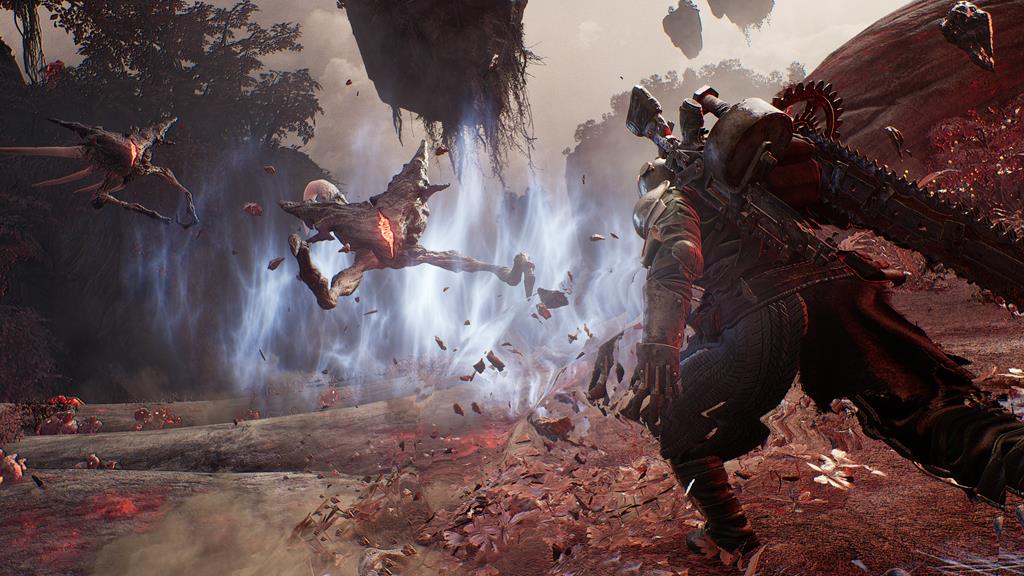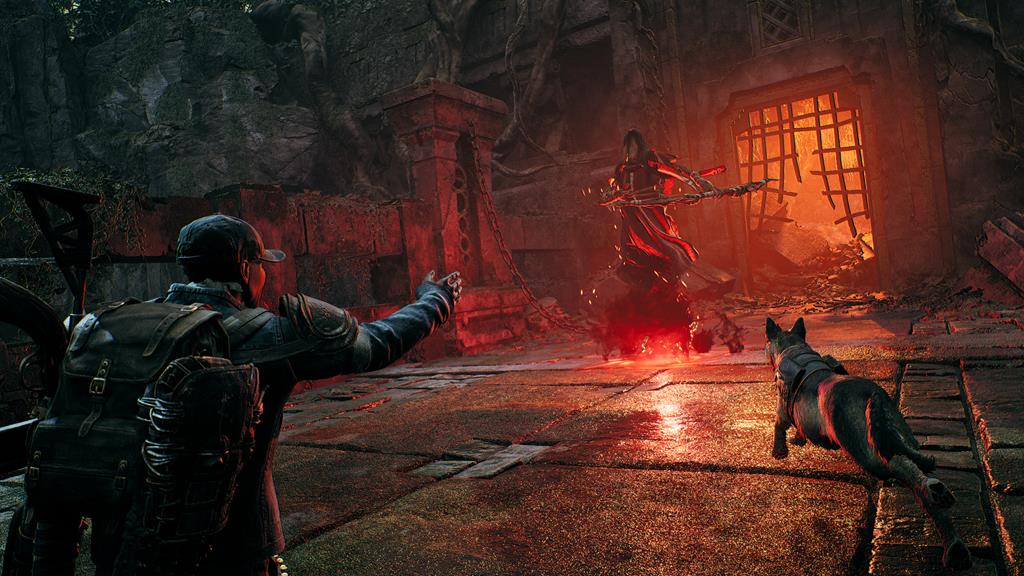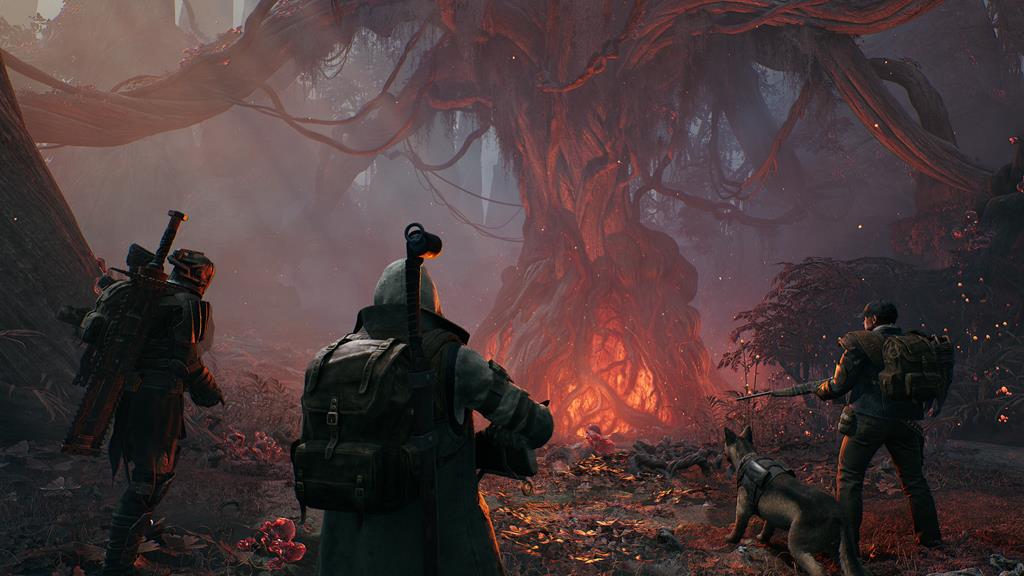Back in 2019, Gunfire Games released Remnant from the Ashes, which was considered a sleeper hit at the time. Not many knew of the game, but those who enjoy the Soulslike genre were keenly aware of the game and loved every bit of it. I and countless others coined the game “Soulslike with Guns” because that’s pretty much what it was. Now, four years later, Gunfire Games is back at it again with the follow-up, Remnant 2. Is it as good as the prequel? No, it’s leaps and bounds better. Read on to find out why I am simply in love with this game.
Game Name: Remnant 2
Platform(s): PC (reviewed), PS5, Xbox Series X|S
Publisher(s): Gearbox Publishing
Developer(s): Gunfire Games
Release Date: July 25, 2023
Before we go into this review, I want to thank Gunfire Games for providing me with a week of early access to Remnant 2. In the gaming industry, it’s rare to get so much hands-on with a game such as this, and having this much time has allowed me to not only play the game from start to finish but unlock several secrets and dive deeper into the lore. So, to you, Gunfire Games, I tip my hat.
The Root Strikes Back
First, a bit of backstory. In Remnant: From the Ashes, players managed to close the door on the Root, an alien force whose sole mission was to annihilate humanity and any other species in the universe. After their defeat, most worlds—including Earth—entered a period of peace, allowing survivors to rebuild after the costly battle. But now, the Root has returned, and it’s up to the players to rise again and finally put an end to the threat.
In Remnant 2, the story does an excellent job of expanding the lore established in the first game, as well as its prequel, Chronos: Before the Ashes. Originally a VR-only title, Chronos was remade for PC a few years ago, tying it into the Remnant universe. For lore enthusiasts like myself, this is a treasure trove. However, things take an unexpected turn about halfway through the game. I won’t spoil anything, but let’s just say it gets… interesting.
The same tried-and-true gunplay (and melee combat) from the prequel has been repeatedly refined in Remnant 2. When I started playing, it felt like reuniting with an old friend—I picked it up without missing a beat. However, there are some notable changes, particularly with how armor is handled. Armor upgrades and set bonuses are gone. Instead, mods and mutators take center stage, offering a variety of effects like freezing enemies, setting them on fire, and more. You also have Relic Fragments, which can be slotted into your Dragon Heart—now called a relic—to provide additional bonuses. With these mods, mutators, and relic fragments, you can fine-tune your builds even further, which seems to be the intention.
Going into Remnant 2, I expected it to be about the same size as Remnant: From the Ashes. I couldn’t have been more wrong. Not only does the game look better in every way, but it’s also significantly larger. While there are fewer worlds, each has a far greater number of areas to explore. The main story will take players through most of these regions, but there are plenty of secondary areas packed with hidden items—like weapons, relics, and other useful loot—for those willing to explore. On top of that, there are even more elusive, hidden areas that are harder to find but well worth the effort.
I also have to highlight the game’s incredible art direction. From weapons and gear to the world designs, everything looks amazing. Each environment feels distinct, and none of the levels disappointed me. Some even went above and beyond. Without giving too much away, I’ll say one level felt straight out of Bloodborne, while another felt like a mashup of Aliens and Dune.
The game also includes various puzzles, and I spent a good chunk of time solving them. Some were so challenging that I had to call in my wife for help, and together we managed to crack nearly every puzzle we encountered.
Boss fights are tough but fair. Whenever I died, it was either because I wasn’t paying attention or wasn’t properly geared for the encounter. One fight, in particular, stood out: I had to contend with two parts of a boss—one chasing me down up close while the other fired a massive beam that could kill me instantly. All of this happened as I had to jump between platforms, keeping me on my toes the whole time.
Finally, like Remnant: From the Ashes, Remnant 2 features dynamically generated worlds. These pull from a pool of randomized events, dungeons, bosses, and more. I’ve already beaten the game and started a new run with a different character, and I’ve encountered new events I didn’t experience the first time around. This adds a lot to the game’s replayability and longevity.
Archetypes steal the show
One of the first things you’ll notice in Remnant 2 is how Gunfire Games has overhauled the Archetype system. In Remnant: From the Ashes, character customization was limited, and once you chose a class, that was it. Now, things have been completely reworked, giving players multiple ways to tailor their gameplay experience. You start by selecting an Archetype—like the Handler, Challenger, Hunter, Medic, or Gunslinger—each with its own unique skills, perks, and traits that level up as you gain experience.
As you progress, you’ll unlock a secondary Archetype once you obtain the required emblem. This lets you access the abilities and perks of both Archetypes as you level them up. What’s exciting is that once you’ve maxed out your primary Archetype, you can swap it with your secondary, making it your new primary, without losing any of the progress or abilities you’ve earned. From there, you can continue leveling up the new primary Archetype.
The real fun begins once you’ve maxed out both Archetypes, as you’ll have full access to all their skills, perks, and traits. At that point, you can either stick with your current combination or switch things up by leveling another Archetype, creating endless possibilities for customization and experimentation.
Take my character, for instance. I started with the Medic because I wanted better healing capabilities early on. As I neared maxing it out, I picked up the Challenger Archetype, which gave me tank-like qualities and the ability to revive after a fatal blow. Once my Medic Archetype was maxed, I swapped the two, allowing me to use the Challenger’s trait that lets me wear heavier gear. Long story short, I now have a character that’s a walking killing machine—able to survive fatal blows thanks to the Challenger, but also equipped with enhanced healing abilities, including mass healing and reviving downed players, courtesy of the maxed-out Medic. This reworked Archetype system gives players so much more versatility, and now that I fully understand how it works, I’m spoiled!
Now, about the Gunslinger. Unless you purchased the Ultimate Edition of the game, you won’t have access to it until much later in the game. Honestly, that feels unfair for those who were excited about playing this class from the start. Gunfire Games had been showcasing the Gunslinger for a while, but they didn’t make it clear that it’s locked behind a specific edition of the game (or through other means, which I won’t spoil here). Regardless, I’m not a fan of how they handled this.
Same great co-op gameplay, definitely more filling
Like Remnant: From the Ashes, Remnant 2 features one of the best implementations of cooperative online play I’ve experienced in a Soulslike game. There are no unnecessary steps to bring someone into your session or join another player’s game. Simply select “public” to allow anyone to jump in, or choose “friends-only” for a more intimate session with your pals. This seamless system works across both the story-driven game mode and Adventure mode, making co-op play smooth and enjoyable.
Are you dying in the game? No problem! You have a limited amount of time before you or your co-op partner is down for good. And even if death comes, it’s not the end—you can revive your teammates at a checkpoint, or if everyone goes down, you’ll all be revived together. There’s no need to worry about anyone being sent back to their own world.
Unfortunately, Remnant 2 does not support cross-platform play or cross-progression, and as of now, there’s no confirmation on whether this feature will be added.
Damned good PC performance
As I played Remnant 2 on PC, this is the part where I get to tell you if it ran well—and I’m happy to report that, for the most part, it did. I tested the game on two different setups: a desktop with a Ryzen 3 3600 and RTX 3060, and a similarly equipped gaming laptop. On both machines, the game ran smoothly, with only minor micro stuttering after boss fights, which was barely noticeable and didn’t raise any major concerns.
Occasionally, I encountered network drop errors, but they didn’t impact gameplay. Since I was playing on a review build, I’m hoping these issues are ironed out in the full release.
Overall, I’m thrilled with how well the game performed on PC, especially given the recent trend of poorly optimized PC ports. For those wondering, Remnant 2 has no Denuvo DRM, so you can rest easy on that front.
Additionally, the game is certified for the Steam Deck, though during my review, it didn’t run well on the handheld. Hopefully, the performance on Valve’s handheld will improve in future updates.
Things I didn’t like
While Remnant 2 has a lot going for it, there are a few issues that stood out to me. First, the controls feel a bit clunky, and I’m not a fan of having to hold down the L3 button/left analog stick to run. It doesn’t always work well, especially when you’re in the heat of battle and getting knocked around. Unfortunately, there’s no option to remap buttons or customize controls, which is a minor but annoying limitation.
Another frustration is that some bosses can jump out of your line of sight, and with no lock-on feature, it becomes a hassle to track them during a fight. But the biggest disappointment is the lack of accessibility options. With how far video games have come in recent years, especially in terms of accessibility, it’s frustrating to see this overlooked entirely.
Verdict
I’ve said a lot about Remnant 2, and hopefully, you’ve read it all. As a fan of the series, I can confidently say this sequel has taken everything great about the prequel and cranked it up to 11. Despite a few minor faults, Remnant 2 has been one of my favorite gaming experiences of 2023, and with nearly 65 hours already invested, I can easily see myself playing for another 65. I do wish there was more emphasis on accessibility options, but I’m hopeful that will come in a future update.
If you take away one thing from this review, let it be this: if you enjoyed Remnant: From the Ashes, you’re going to love this game. And if you’re a fan of action RPGs, especially Soulslike titles, Remnant 2 is absolutely worth your time. Gunfire Games has delivered another masterpiece, and you can feel the passion they poured into it. I sincerely hope Remnant 2 gets the recognition it deserves, even more than its predecessor.
Remnant 2 releases on PS5, Xbox Series X|S, and PC on July 25, 2023, or July 21, 2023, for those picking up the Ultimate Edition.
Review Disclosure Statement: Remnant 2 was provided to us for review purposes. For more information on how we review video games and other media/technology, please review our Review Guideline/Scoring Policy for more info.
Affiliate Link Disclosure: One or more of the links above contain affiliate links, which means we may receive a commission at no additional cost if you click through and purchase the item.
Summary
Gunfire Games has taken everything it learned with Remnant From the Ashes and expanded on it in such a massive way that I don’t think it can top it. But I’m more than happy to see them try. There’s something for Remnant junkies, action RPG and Soulslike fans to enjoy, but more importantly, the game screams fun.
Pros
- Gameplay is still fun as well
- The levels are both massive and beautiful
- Archetypes, Mods, Mutators, and more make this a mix/max player dream game.
- The lore just keeps getting deeper
- Lots of replayability
Cons
- No Accessibility Options
- No way to remap buttons and change the control scheme
- The story doesn’t give me that closure I was looking forward to






